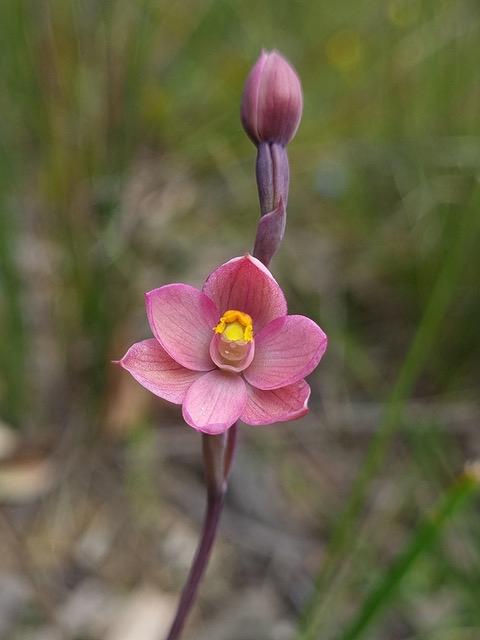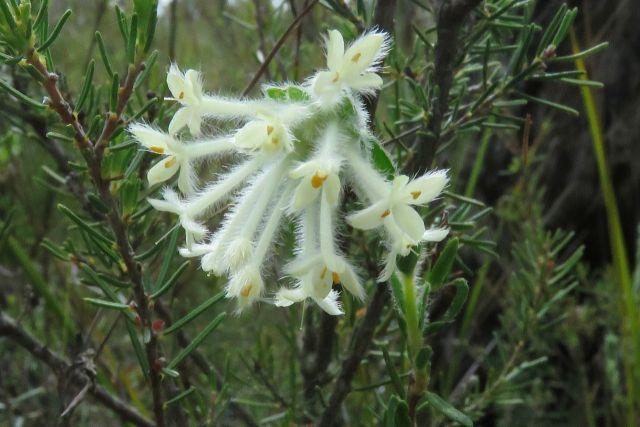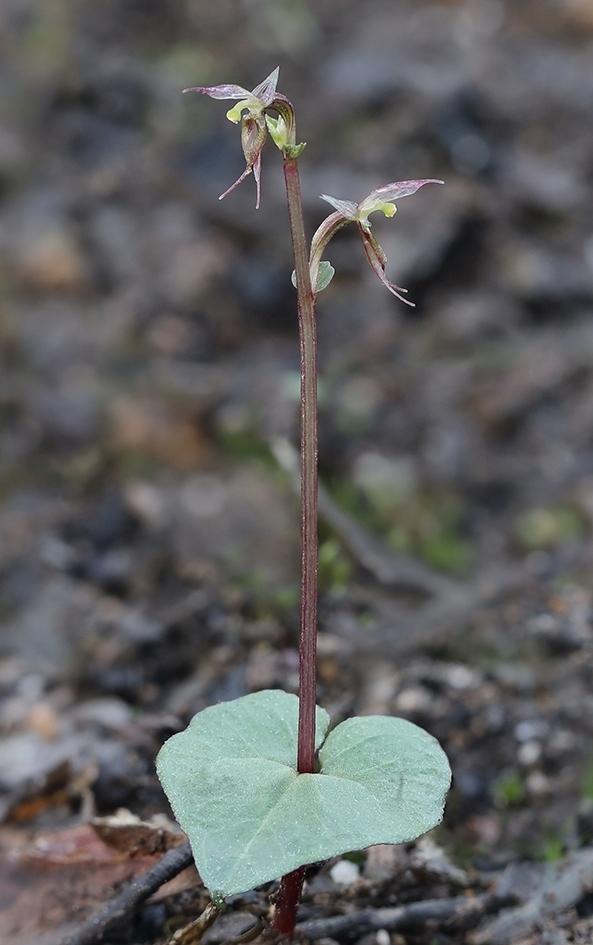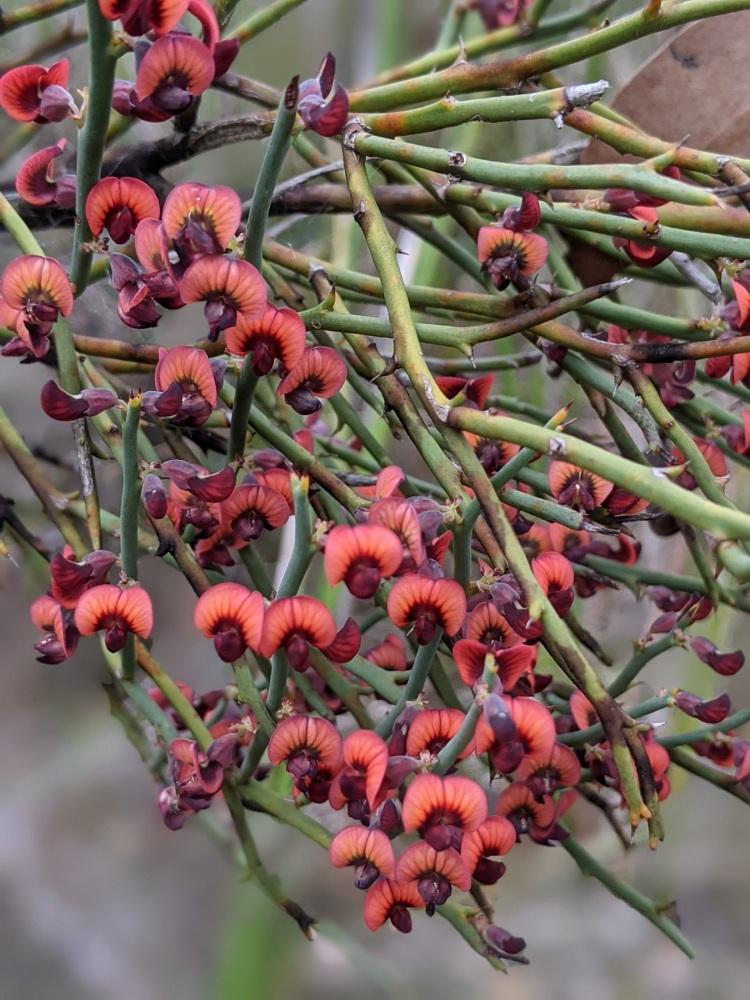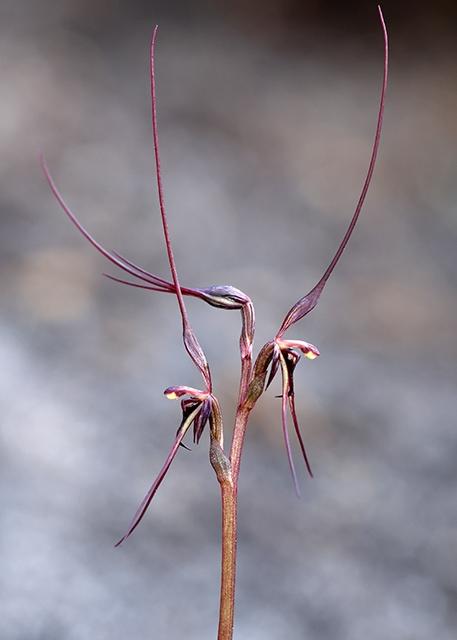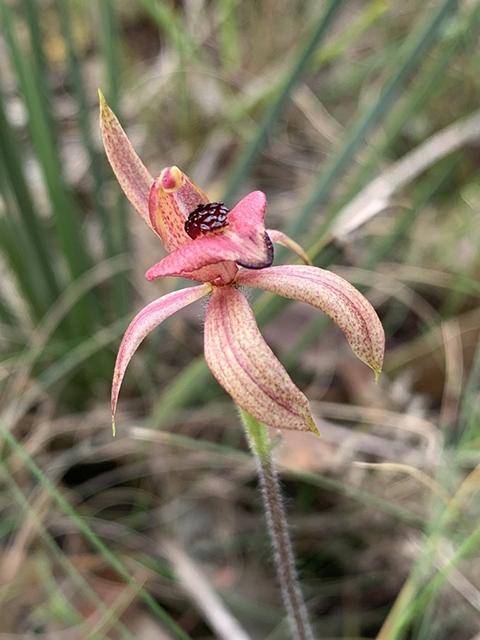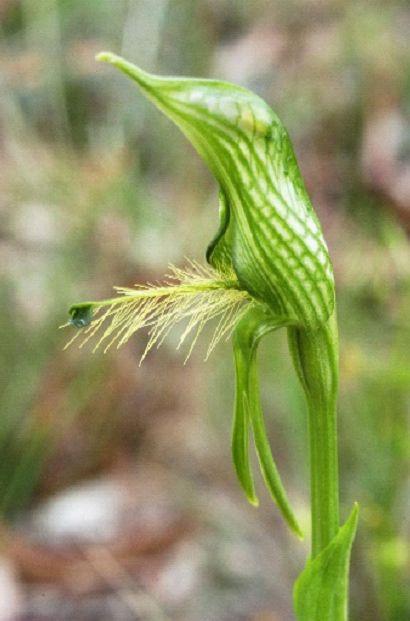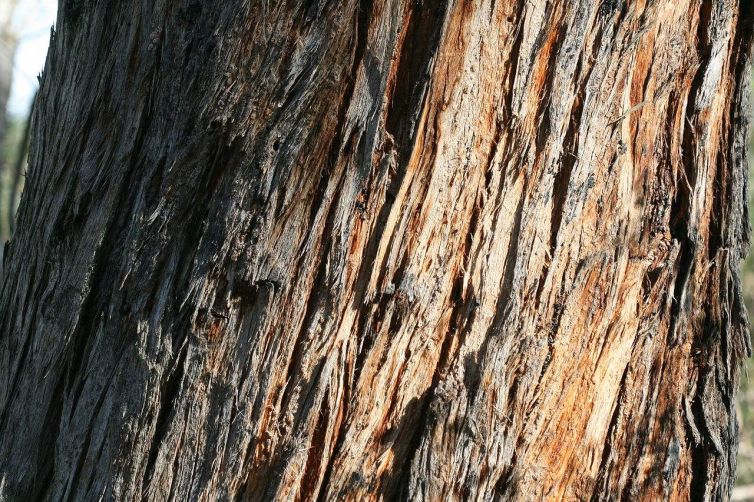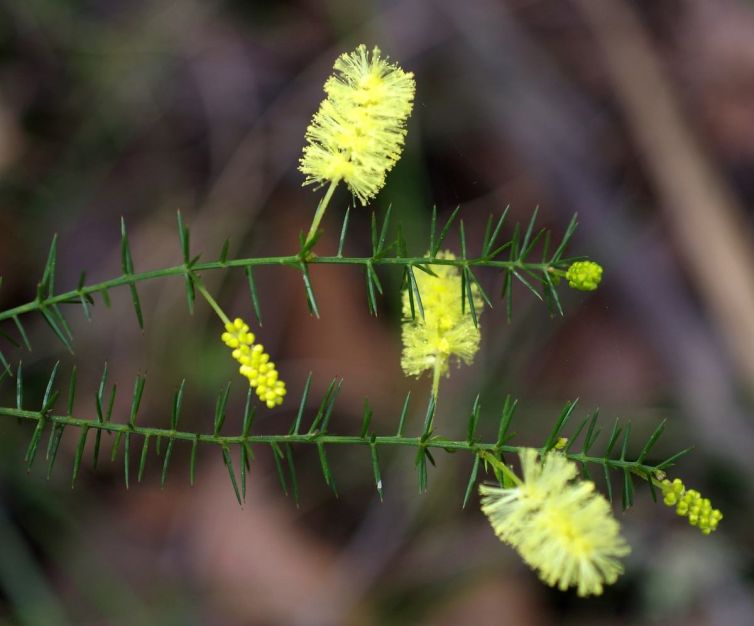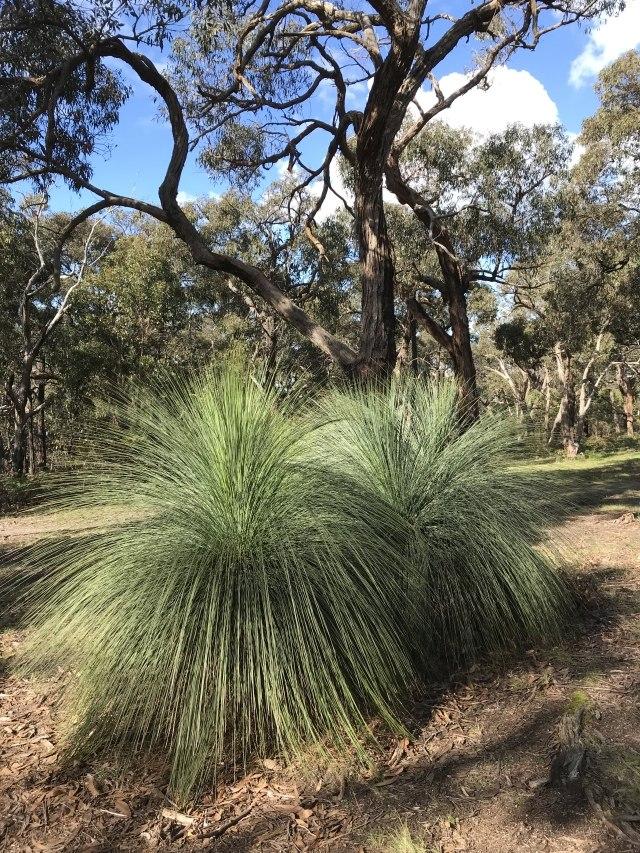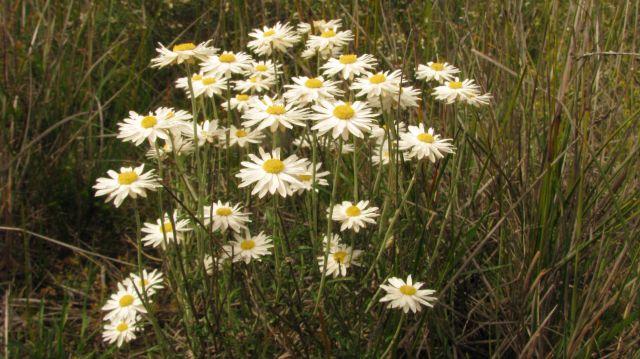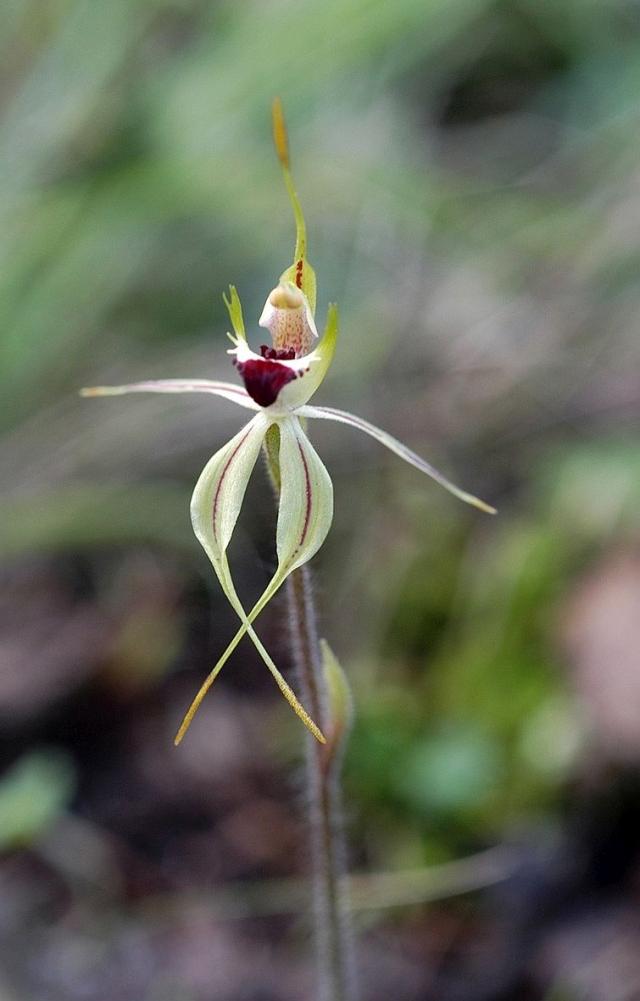
Turn off the Great Ocean Road at Gilbert Street which is opposite the Aireys Inlet Community Centre. Drive 1.1 km along Gilbert Street. Turn left into Katalin Road and then right into Spence Avenue. Park at end of road along Spence Avenue.
Enter the Park at a break in the fence leading to the walking track. You will see the sign Teds Ridge Track and a commemorative plaque in honour of Ted Faggetter (1909–2001) who was the co-founder of the Friends of Angahook–Lorne State Park now known as Friends of Eastern Otways.
Ted lived locally and loved walking through this section of the Park.
Follow the track straight ahead as it winds its way through dense and diverse vegetation. The Austral Grass-trees are a feature. Unfortunately, the effects of Cinnamon Fungus (dieback) are apparent, with some grass-trees having died from the pathogen.
The main trees in this area are messmates with long-fibred ‘stringy bark’. The bark is replaced each year but as fuel reduction burns are carried out regularly to reduce fire threats to the Aireys Inlet population, the trunks are usually blackened. This blackness offsets the low-growing understorey vegetation.
So many of our heathland plants are found here. The Leafless Bitter-Pea is a feature, while other pea flowers, daisies, Running Postman, guinea flowers, Woolly Pimelea and Honey-pots are just some of the low-growing plants. Wattles include the rare Spreading Wattle and the more common Prickly Moses. The uncommon Holly Lomatia that sends up flower spikes of creamy-white flowers after fire grows on the side of the track.
Ground orchids grow along the sides of the track. The area is a stronghold for the endemic Unicorn Bearded Greenhood but there are many others – spider orchids, finger orchids, gnat orchids, Mayfly Orchids, Mosquito Orchids and sun orchids. The Spiral Sun Orchid that used to flower there regularly is now exceptionally rare.
Spreading Wattle (Photo by Ellinor Campbell)
Running Postman (Photo by Ellinor Campbell)
Mayfly Orchid (Photo by Margaret MacDonald)
Holly Lomatia (Photo by Ellinor Campbell)
Messmate (Photo by Arthur Chapman, CC BY)
Austral Grass-trees (Photo by Gail Sluikhuis)
White Fingers (Photo by Margaret MacDonald)
Mosquito Orchid (Photo by Margaret MacDonald)
Honey-pots (Photo by Neil Blair CC BY)
Gnat Orchid (Photo by Margaret MacDonald)
Prickly Moses (Photo by DavidFrancis34, CC BY)
Soft Bush-pea (Photo by Ellinor Campbell)
Silky Guinea-flower (Photo by Gail Sluikhuis)
Salmon Sun Orchid (Photo by Margaret MacDonald)
Leafless Bitter-pea (Photo by Rob Shepherd)
Heart-lipped Orchid (Photo by Margaret MacDonald)
Unicorn Bearded Greenhood (Photo by Margaret MacDonald)
Blunt Everlasting (Photo by Ellinor Campbell)
Small Spider Orchid (Photo by Margaret MacDonald)
Spiral Sun Orchid (Photo by Cathy Powers CC BY)



